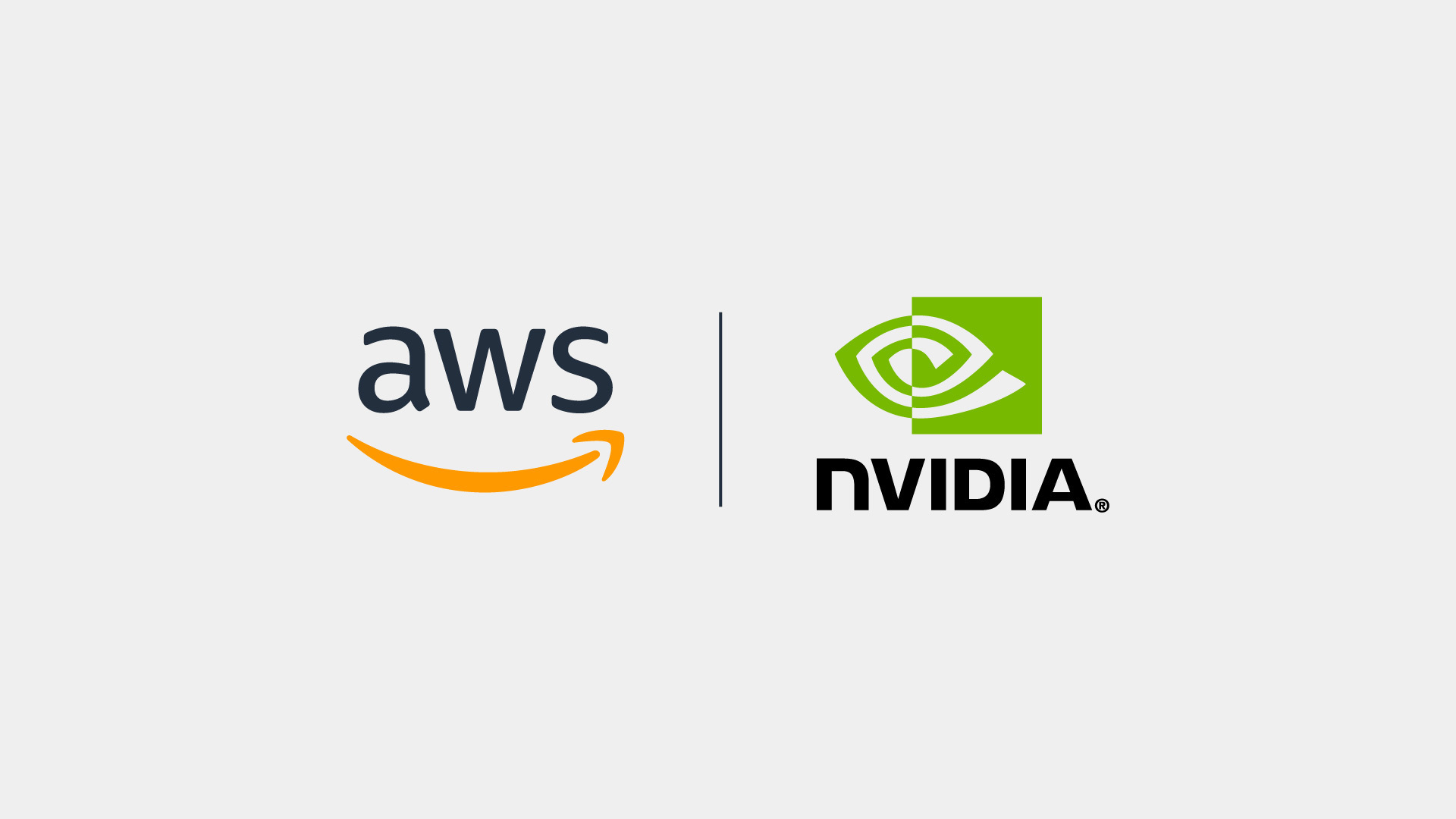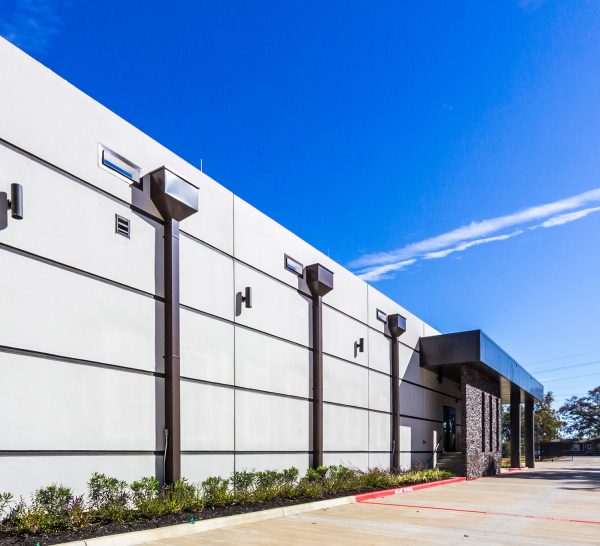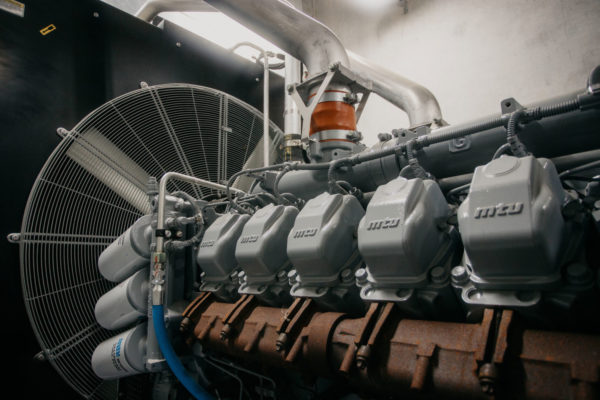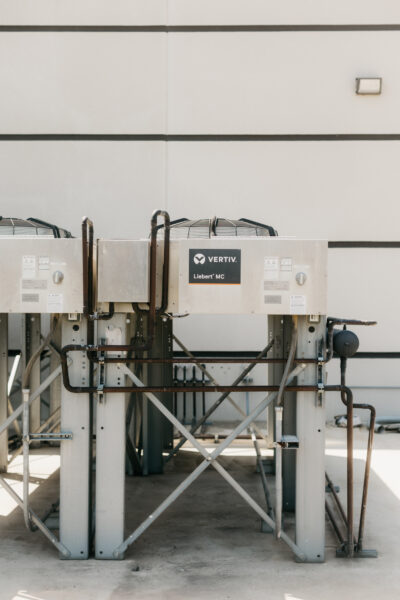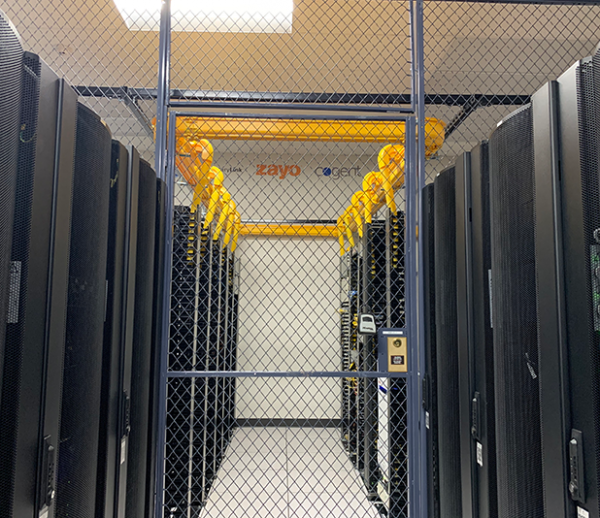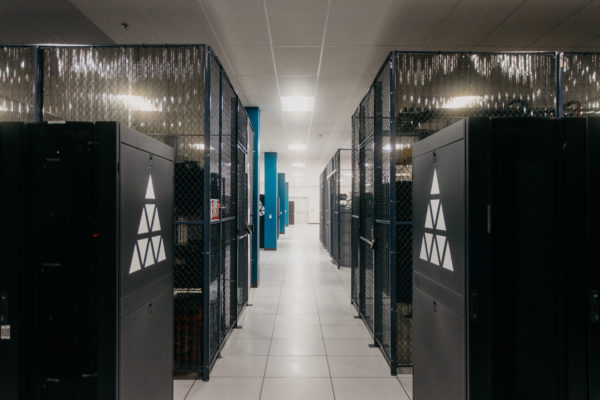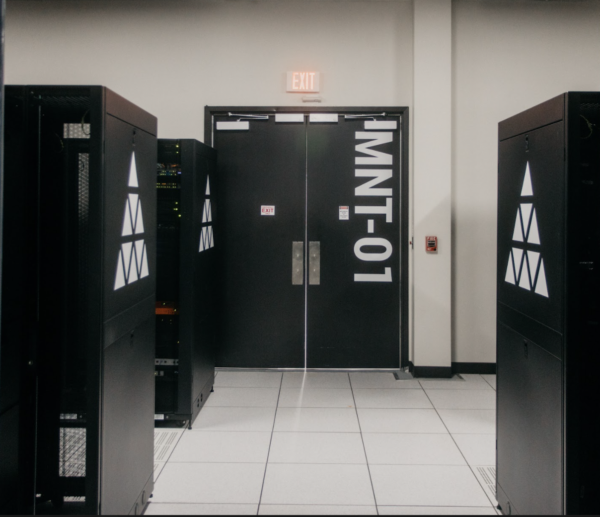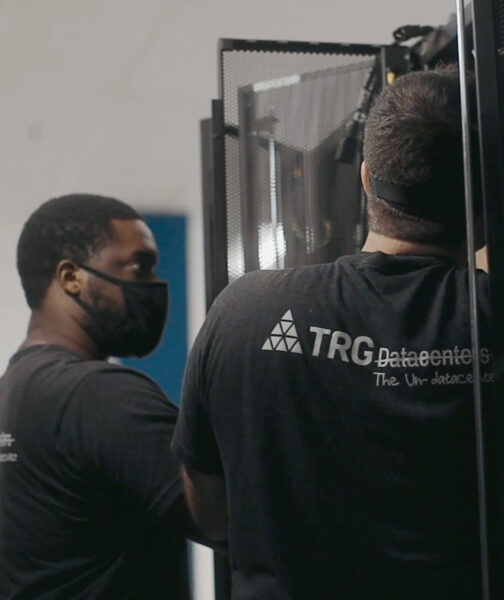The demand for high-performance computing has skyrocketed with the rapid growth of artificial intelligence, machine learning, data analytics, and 3D rendering applications. However, the unreal costs of installing GPUs with enough specification to power such applications are keeping businesses away from adapting to the latest market-breaking technologies.
AI colocation has the answer to this burning question. Simply put, using robust GPUs remotely. In even simpler terms, data centers enable businesses to use the most powerful GPUs in the world.
In the world of GPU colocation, there are two big names, Amazon Web Services (AWS) and TRG data centers. These leading cloud providers offer a range of GPU-powered instances that cater to these demanding applications.
GPU colocation services from TRG let you harness the power of the best GPUs without the high upfront costs of owning and maintaining the hardware.
However, navigating AWS GPU pricing can be complex. There are various instances, types, models, and countless other things that should be considered only then you can make an informed decision.
Whether you’re training machine learning models, running simulations, or rendering high-quality graphics, choosing the right GPU instance at the right price can significantly impact your business operations or performance.
This comprehensive guide breaks down AWS GPU pricing, we’ll explore different pricing models and all the factors that could influence costs, and practical strategies to optimize your expenses. Let’s jump right in!
AWS Services: What are They?
AWS EC2, or Amazon Web Services Elastic Compute Cloud, is a service equipped with numerous NVIDIA and AMD GPUs that allows users to perform labor-intensive tasks such as deep learning, machine learning, high-performance computing (HPC), and graphics-intensive applications at significantly faster speeds than previous services equipped only with CPUs.
AWS offers a wide variety of AWS GPU instances, each tailored to specific needs. These instances, powered by NVIDIA Tensor Core GPUs and other cutting-edge hardware, are designed to handle the most demanding workloads, from machine learning inference to training large-scale machine learning models. With AWS GPU cloud, users can enjoy the flexibility of cloud-based resources combined with the power of NVIDIA RTX GPUs and AMD technology.
There are numerous types of GPU instances, including P2, P3, P4, and G5. All of them differ in prices, specifications, features, and use cases. Thus, at the beginning of this guide, we emphasized the importance of understanding the AWS GPU pricing model to make an informed decision. By the end, you’ll have a full understanding of how the pricing model works and how to maximize its benefits.
Types of AWS GPU Instances
AWS services offer over a staggering 750 instance types for different use cases. Let’s quickly compare the best ones and what makes them better than the rest.
P2
As one of the first GPU-powered instances offered by Amazon, these instances are equipped with NVIDIA K80 GPUs and excel in parallel computing capabilities. While they’re not the most powerful option, they remain a solid choice for general-purpose computing and less complex AI training tasks.
Each instance has 12 GB of GDDR5 memory per GPU and is available with 1, 8, or 16 GPUs. These instances are ideally suited for machine learning, computational fluid dynamics, molecular modeling, computational finance, genomics, high-performance databases, and rendering tasks. Their massive parallel floating-point (FP) processing power makes them well-suited for server-side workloads that don’t require the latest technology.
Although P2 instances are a cost-effective solution, users looking for higher performance should consider newer instance types like P3 or P4 for more advanced tasks in high-performance computing and data-driven applications.
Pricing:
- P2.xlarge costs $0.90 per hour
- P2.8xlarge costs $7.20 per hour
- P2.16xlarge costs $14.40 per hour
P3
Obviously, the P3—a newer model to the P2 one, provides better power and efficiency than the predecessor. It is equipped with the NVIDIA V100 Tensor Core GPUs and can tackle complex tasks easily.
The instance is equipped with the robust NVIDIA V100 with 5,120 CUDA cores and 640 Tensor cores per GPU. It has 16 GB of HBM2 memory per GPU and is available with 1, 4, 8, or 16 GPUs.
According to the official statement, this machine has been proven to reduce machine learning times from days to minutes, with a 3-4x increment in the number of simulations completed for high-performance computing.
The machine also possesses power of 100 Gbps of networking throughput for machine learning and HPC applications.
Pricing:
- P3.2xlarge costs approximately $3.06 per hour.
- P3.8xlarge costs around $12.24 per hour.
- P3.16xlarge costs approximately $24.48 per hour.
P4
P4 instances feature NVIDIA A100 GPUs and offer unparalleled performance for artificial intelligence and high-performance computing workloads. It is equipped with NVIDIA A100 GPUs with 6,912 CUDA cores and 432 Tensor cores per GPU. It processes 40 GB or 80 GB of HBM2 memory per GPU. Similar to the P2, it is available with 1, 4, or 8 GPUs.
This powerful instance is super cost-effective, it is designated to help you cut costs by 60% to train machine learning models. In numbers, it offers a 2.5x performance boost as compared to previous generations, such as P3, P3dn, P2, etc.
This instance is especially known for its multi-instance GPU (MIG) technology that enables the instance to split GPU resources among smaller tasks to perform tasks with better speed and efficiency.
Pricing
- P4d.24 xlarge costs $32.77 per hour.
- P4de.24 xlarge costs $40.97 per hour.
G5
Now, we are talking about power. The G5 instances are specially designed for high-computational, graphic-intensive, power-hunger workloads like training complex machine learning models or performing resource-intensive AI tasks.
These instances feature NVIDIA A10G Tensor Core GPUs and are optimized for both rendering and machine learning. The power comes from the NVIDIA A10G machines that come with 4,864 CUDA cores and 320 Tensor cores per GPU. Not to mention their outrageous memory of 24 GB of GDDR6 memory per GPU. The instance is available for one or multiple GPUs.
The instance performs 3x better for graphics-intensive applications and machine learning inference as compared to its predecessors. Moreover, let’s shed some light on the cost-effectiveness, even though the previous one is optimized for cost-effectiveness, this one can offer even better performance at lower prices.
Another important benefit is versatility. These instances can be used for complex graphic-intensive tasks and compute-heavy tasks as well.
As always, here’s a detailed chart with a side-to-side comparison between all instances and what makes them different.
Pricing:
- G5.xlarge costs approximately $1.006 per hour.
- G5.4xlarge costs approximately $1.624 per hour.
|
Instance Name |
Cores per GPU |
Memory per GPU |
Instance Size |
Who is it for? |
|---|---|---|---|---|
|
P2 |
NVIDIA K80 with 2,496 CUDA cores |
12 GB of GDDR5 |
Available with 1, 8, or 16 GPUs. |
If you are tight on budget and need GPU acceleration for smaller projects |
|
P3 |
NVIDIA V100 with 5,120 CUDA cores and 640 Tensor cores |
16 GB of HBM2 |
Available with 1, 4, 8, or 16 GPUs. |
Those looking for a balance between cost and performance for HPC. |
|
P4 |
NVIDIA A100 with 6,912 CUDA cores and 432 Tensor cores |
40 GB or 80 GB of HBM2 |
Available with 1, 4, or 8 GPUs |
Organizations or individuals training extremely large AI/ML or LLM Models |
|
G5 |
NVIDIA A10G with 4,864 CUDA cores and 320 Tensor cores |
24 GB of GDDR6 |
Available with 1 or multiple GPUs. |
Graphics professionals or developers needing GPU power for rendering 3D models and intensive graphics. |
⚠️ Prices are on-demand and can vary on a number of factors! We encourage the user to confirm the prices before taking a step. These prices are taken from Vantage.sh and Amazon Web Service.
Understanding AWS GPU Pricing Models
To get the most out of AWS GPU pricing, understanding their pricing model is essential. The company offers several pricing plans, including:
- On-Demand Instance. This plan enables you to pay for the power you use or the capacity your machines consume by the hour or second (minimum of sixty seconds). This plan is great if you do not use AWS GPU instances regularly, as it doesn’t require long-term commitments or upfront payments. In a nutshell, you use the GPUs when you need them and pay for the time used.
- The Savings Plan. As the name suggests, this plan is ideal if you use AWS GPU cloud services continuously and also want to save—which we’re sure you do. The plan offers flexible pricing on various instances, such as Amazon SageMaker AI, AWS Lambda, and AWS Fargate, in exchange for a commitment to consistent usage of the instances. The prices are calculated hourly for one- or three-year terms.
- The Spot Instance. This model is a bit tricky but can be up to 90% cheaper than on-demand pricing. However, the discount comes with constraints. In this pricing model, you set a bid for the highest price you are willing to pay for an instance, and AWS can reclaim the instance if demand spikes and another user is willing to pay more. So, if availability and interruptions are concerns, this option might not be ideal.
- Reservations. Last but not least, this pricing plan allows you to enjoy up to 75% discounts by paying for capacity in advance. As the name suggests, it enables you to reserve GPU instances at lower prices. This is a great option for businesses with predictable workloads.
- Dedicated Hosts. Dedicated hosts is a complete server that you can buy for private purposes. It is completely reliable and dependable. The servers and hardware are completely maintained by AWS, which explains the higher prices. Therefore, these prices are not very friendly for individuals and are only recommended for enterprises and businesses.
Factors That Can Influence The Prices
Although the pricing models are straightforward, there are several factors that can influence the prices widely. Understanding these factors is key before committing to AWS GPU services: These factors include:
- Instance and GPU Types. The type of instance-based GPUs you choose will significantly impact your costs. For example, NVIDIA A100 GPUs are more expensive than P2 instances equipped with NVIDIA K80 GPUs. The GPU generation also matters—newer models like NVIDIA Tensor Core GPUs offer better features and performance but come at a premium price.
- Region and Availability Zone. The cost can also vary due to differences in infrastructure, demand, and operational costs in different regions around the world. Costs vary by region due to infrastructure, demand, and operational expenses. Prices can spike in regions like Europe West, where demand exceeds supply.
- Pricing Model. For another reminder, pricing models can significantly impact your total cost. On-demand pricing might seem upfront and easy but it can be costly as compared to making a commitment, savings plan, or making a spot instance. AWS GPU pricing models can be optimized for long-term use.
- Usage Duration. Short-term usage can be more expensive than—as discussed—making a commitment with saving plans. Using it for longer times can benefit from price models like spot instances.
- Instance Size. Earlier, we discussed different instances that come in various sizes. The size of the instance determines the number of GPUs, CPUs, memory, and networking capacity. Larger xlarge instances come with higher costs due to better GPUs, CPUs, and networking capacities. Choosing the right size for your needs is essential to avoid overpaying.
- Software Licensing Costs. Some GPUs may require specific licensing which can be very expensive. For example, licensing for advanced machine learning software can be pricey.
- Data transfer fees. Transferring large datasets into or out of AWS GPU cloud servers can drive up costs, especially for tasks like video processing or machine learning models. This occurs especially when video processing or training AI models or LLM.
Basically, these characteristics make AWS GPU cloud solutions valuable but potentially costly.
On a similar yet different note, TRG facilities are built with the characteristics of a top-tier data center: unmatched reliability, advanced cooling, and robust data center security to keep your systems running at peak performance without the nightmarish prices.
Tips for Optimizing AWS GPU Costs
AWS continuously innovates new optimization techniques to enable users to get the best of their services at minimal prices. Apart from a variety of AWS pricing options, AWS provides you with the flexibility to amend your purchase plan in a way that is cost-effective and tailored to your needs. Here are a few techniques you can use to reduce total costs.
Choosing the Right Instance Type
Choose your instance type consciously. Let’s say you rented a rack and only used like 20 or 50% of its power, the remaining power will be lost. Thus, you should always consciously choose an instance that matches your needs and budget. For example, if you are planning on training large AI models, opt for high-performance instances like P3 or P4. If you want to perform HPC tasks, like robust graphics rendering, G4 instances can be cost-effective and offer better effectiveness.
While we’re on the topic of high-performance needs, If you’re searching for the best GPU for AI workloads, TRG Data Centers provide access to the best GPU for AI like the NVIDIA A100 and H100 in an optimized environment
Use Unused Capacity With Spot Instance Pricing
As discussed earlier, you can bid on the highest price you could pay for an instance. Although AWS can retain their GPUs anytime, they do give you ample time to turn your systems off or save your projects before revoking access.
Although these interruptions can be frustrating, learning to work with them can reduce costs by up to 90% as compared to other on-demand plans.
Reduce Costs With Saving Plans
Those organizations or enterprises that constantly use AI colocation can benefit from committing to use the services for one or three years. Reserved instances can provide up to 75% cost savings on specific instances or models.
Paid for Whole GPU, Use Whole GPU
Since you paid for the entire GPU, utilize the GPU fully by leveraging Amazon’s CloudWatch services to adjust your instance in a way that fits your requirements. Use the power of parallel processing by running multiple tasks simultaneously on the same GPU. This would coerce the GPU to use its entire capabilities to complete the given task. Which will, in turn, improve performance and reduce cost.
Utilize Auto Scaling
You can also implement Auto Scaling for cost optimization. This feature automatically adjusts your resources based on the workload. That means it automatically scales down when you are not performing highly complex tasks, and only uses the culmination of the machines when solving complex calculations or carrying out HPC.
Not a Fan of Renting Your Machine? Try TRG Data Centers
AWS is great if you need flexible GPU access, but sometimes you want more control over your setup. Owning your hardware lets you customize and scale things just the way you need, but managing it yourself can be a headache. Think about cooling those powerful GPUs or keeping everything secure—it’s a lot to handle.
That’s where TRG Data Centers can step in. We make colocation simple. You can bring your own hardware or rent top-notch GPUs from us, all while using our state-of-the-art facilities. With 99.99% uptime, advanced cooling, and solid security, you get the control you want without the hassle.
With 20+ years of experience and a near-perfect track record, businesses around the globe trust us to keep their systems running smoothly. Whether it’s AI, big data, or complex projects, TRG is here to make sure your hardware performs like a dream without the sky-high costs of cloud services.
Looking for a reliable colocation option? Our Houston data center offers cutting-edge facilities designed to handle high-performance GPU workloads with ease, providing state-of-the-art infrastructure and 24/7 support for all your GPU and AI needs.
Key Takeaways
With growing demand for heavy GPU usage, but not having enough resources, the world can not help but rush to colocation services, like AWS that allow you to use the most robust instances on your mundane device. If you’re planning a data center relocation, TRG’s expert team can help you transition smoothly while minimizing downtime and risks.
Since AWS prices are complex, it is imperative to thoroughly understand them before purchasing one. To recap, there are hundreds of other instances but the few common ones include P2, P3, G4, etc., so always ensure to double-check your requirements before deciding on one. As discussed earlier, buying something more than you need is basically just wasting resources.
Do not forget to leverage the best artificial intelligence practices to keep your cost on track. Leverage services like CloudWatch or auto-scaling to optimize your system to use less energy unless at the time of performing the most complex tasks.
Finally, if you are not a fan of renting a machine from a service like AWS, you can host your machines in one of our data centers, where you keep your GPUs in optimal condition.
After all, TRG’s AI colocation services offer tailored solutions to support complex workloads and optimize your machine learning operations.
Frequently Asked Questions
What is an AWS GPU?
An AWS GPU is a Graphics Processing Unit available through Amazon Web Services’ cloud platform. The company allows you to perform the most complex tasks using its robust machine without having to invest in physical hardware.
How much does a GPU cost on AWS?
The price differs based on a number of factors. However, for quick consideration, note that: The p2.xlarge instance with one GPU can cost $0.425 per hour, while the instance that has eight GPUs costs $3.400 per hour.
How much does an H100 GPU cost in AWS?
The price varies based on different pricing modules. For example, renting an EC2 p5.48 xlarge instance on-demand can cost something around $44.50/hour, and renting the same instance for a three-year commitment costs around $1.13M, which is a 56% decrease from the previous.
Looking for GPU colocation?
Deploy reliable, high-density racks quickly & remotely in our data center
Want to buy or lease GPUs?
Our partners have H200s and L40s in stock, ready for you to use today
